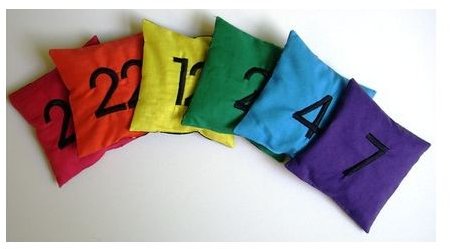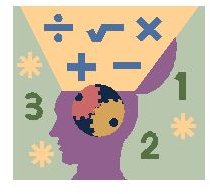How to Estimate Answers to Math Problems Quickly: The Key to Estimation
The Long Way and the Short Way
There are a lot of hard math problems out there, that need exact, precise answers and require you to sit down and carefully work
through them. Other times, however, all you need is an answer that’s “close enough.” What close enough means will depend on the context, but you already have experience in estimating! For example, if someone asks you how long it will take to do something and you guess three hours, it doesn’t really matter if you’re wrong by fifteen minutes in either direction.
By learning how to estimate math problems, you can quickly solve simple problems without needing to resort to a calculator (or, often enough, without even needing paper and pencil!)
Adding Numbers Quickly
So what does it mean to estimate in math? Let’s start off with a simple example. Suppose we’re doing the grocery shopping and want

to keep a running total of how much we’re going to spend; maybe we have $100 to spend and want to avoid going over that. If we buy items that we estimate add up to no more than $80, we can be off by $10 and still have enough left over for sales tax!
So let’s say we’ve already selected items that cost $1.23, $5.98, $1.99, $19.99, $3.25, and 99c. How much have we spent so far?
You could write everything down and add it up, but an easier way is to simply round everything to the nearest dollar and add those. Rounded off, we have $1, $6, $2, $20, $3, and $1; it’s easy enough to mentally add those up and find out that we’ve spent about $33 so far. (The actual total is $33.43, so our estimate is off by 43 cents, or about 1.2%) Every time we add another item to our shipping card, we just round off that price and add it to our running total.
In fact, because prices tend to end in .97 or .99 more often than not, estimating in this way will often cause you to slightly overestimate how much you’ve spent, which is always good for your wallet!
Ready to practice? First estimate the sum of these numbers, then add them up to find the actual result: 42, 51, 39, 88.
Mental Multiplication
We can use a similar trick to quickly multiply numbers. Suppose we need to find the product of 198 and 21; rather than writing out the whole process (which gives a result of 4,158), we can simply observe that 198 is about 200 and 21 is about 20; we then multiply 200 by 20, which is easy because we just ignore the zeros, take 2x2=4, then put the three zeros back on to see that our answer is about 4,000.
Actually, that’s a nice trick for multiplying numbers in general: cross off all the zeros at the ends of the numbers, do your multiplication, and then put them back on. It’s particularly useful when estimating because we’re generally going to round off the numbers, which gives us more zeros to ignore!
This works for small numbers as well; if we have to multiply 1.44 by 3.01, we can notice that this is about 1.50 times 3.00, so we multiply 3 x 1.5 to get our answer of four and a half.
Ready for some big numbers? See if you can estimate the product of 9,898 and 23! The answer is at the end of this article.
Easier Division
When we need to divide numbers, we can use the same tricks that we used for multiplication. For example, suppose we need to divide 589 by 47. We can notice that 589 is close to 600 and 47 is close to 50; then we have 600 divided by 50, a much easier problem! We can even do a similar trick with the zeros: as long as there’s a zero at the end of each number, cross it off! In this case, that makes our problem 60 divided by 5, or 12! The actual answer was 12.53, so our estimate is pretty close.
Ready for a challenge? See if you can estimate the quotient (that is, what you get when you divide) of 9,167 and 1,023, then use a calculator to find the answer!
Answer to the Multiplication and Division Problems
9,898 is about 10,000 and 23 is about 20. If we take off the five zeros, we get 1x2=2; putting them back on, we see that the answer is about 200,000!
In the division problem, we have about 9,000 divided by about 1,000, so the answer is about nine. The actual quotient is 8.96.
Resources
Ready for more practice? Try some of these free worksheets!
Rounding: BBC-Skillswise Numbers
Rounding and Estimating: edHelper.com
The math pillows image belongs to EraPhernalia Vintage.
